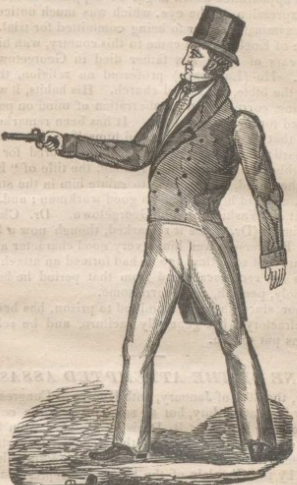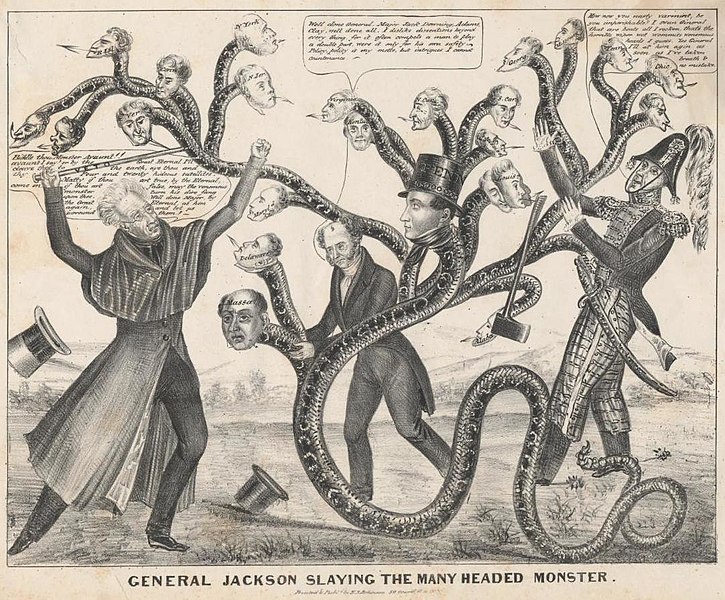Richard Lawrence was full of lead. On one fateful day in 1835, he decided to fill President Andrew Jackson with lead too. Why did the course of American history nearly hinge on a once-common house paint additive, and why have people throughout history been consuming and working with this poisonous metal?
Content note: This episode contains some outdated medical terms about mental illness.
Featured image: An etching of Lawrence’s assassination attempt. (Image source)

A newspaper image of Richard Lawrence’s attempt on Jackson’s life. (Image source)

A portrait of President Jackson painted in 1835, the same year as this episode’s crime. (Image source)

A political cartoon featuring Jackson (with his famous walking stick!) fighting the many-headed hydra of the Bank of the United States. (Image source)

The Government Hospital for Insane, now known as St. Elizabeth’s, where Lawrence spent the later years of his life. (Image source)
Sources
- President Andrew Jackson attacked
- The Attempt to Kill “King Andrew”
- Partisan Politics and the Attempted Assassination of Andrew Jackson
- Bank War
- Another Time, Another Place– The Attempted Assassination of President Andrew Jackson
- Painter’s Colic
- Protect Your Family from Sources of Lead
- Burton’s Line in Lead Poisoning
- Did lead poisoning cause downfall of Roman Empire? The jury is still out
- Lead poisoning
- Sugar of Lead: A Deadly Sweetener
- Occupational Safety and Health Standards: Toxic and Hazardous Substances
- Identifying Lead Paint: What Does Lead Paint Look Like?
- New England Weather, Winter of 1835-36
- H. to his wife, Febrary 2, 1835, regarding an attempted assassination of President Jackson on the steps of the Capitol
- A Crime of Insanity – Insanity on Trial
- Background and History of the Insanity Defense
- Hannah, Andrew Jackson’s Slave
- The Records of St. Elizabeths Hospital at the National Archives
- The Acknowledgement – Mattachine Society of Washington D.C.
- Hoover’s War on Gays
